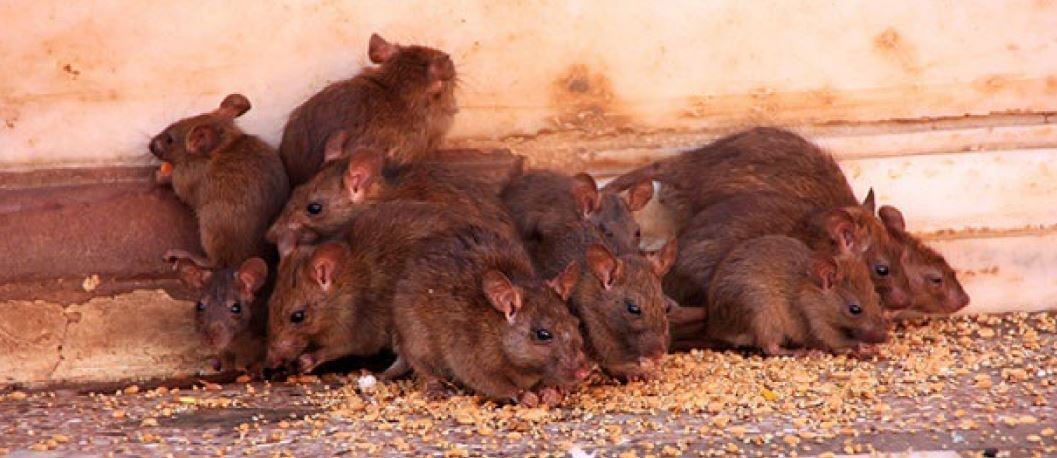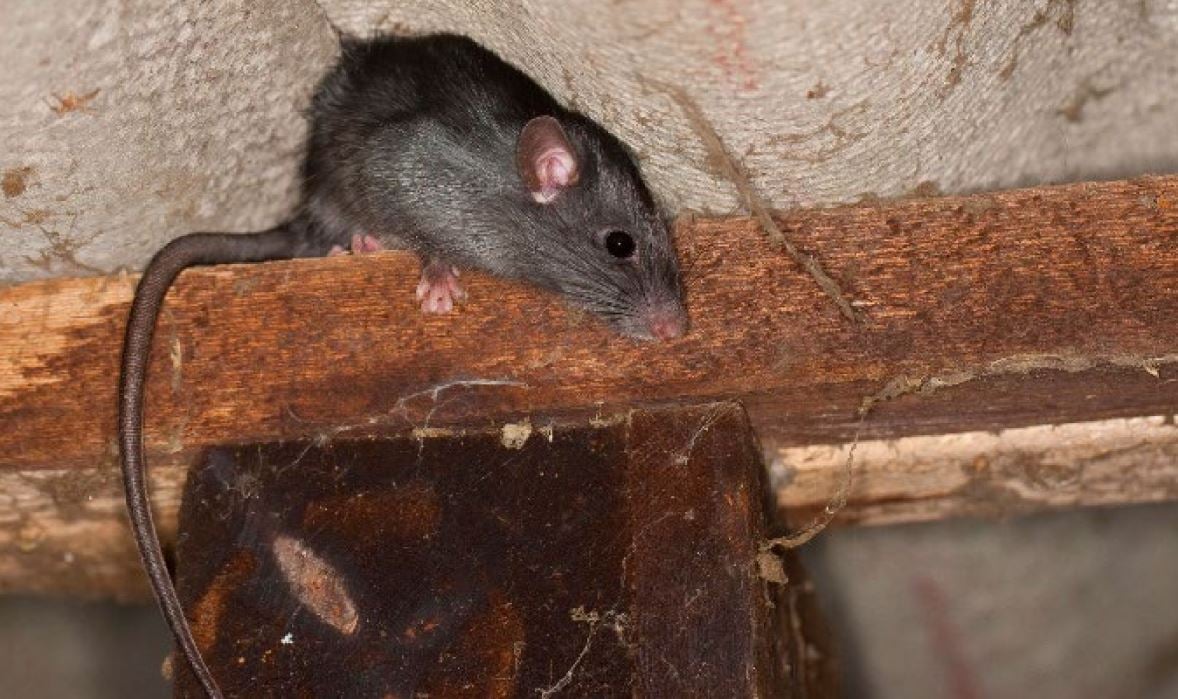Physical description
The black rat (Rattus rattus), also known as the roof rat, ship rat or fruit rat, is a pest rodent common to most of coastal Australia. Due to the high availability of food, water and shelter, they are often found in urban and agricultural areas.
Despite the name, black rats can be brown, grey or black in colour, and their fur is smooth and soft in appearance. Black rats are smaller than brown rats, have a tail longer than their body, hairless ears, large eyes and pointed snout.

Behavioural features
Black rats are active and agile climbers, often found nesting in roof voids and ceiling cavities. They dig burrows from time to time, although not as commonly as brown rats. Banana shaped rat droppings, typically scattered within roof cavities, is one way to determine that you have black rats, without seeing the rodents themselves.
Black rats are not as intelligent as brown rats, are reluctant to investigate new objects (i.e. bait stations, traps) or try new sources of food (bait). Black rats are mainly active at night, so seeing them during the day can be a sign of a high local population.

Diet
Black rats have an omnivorous diet that consists mostly of fruits, nuts, grains and vegetables. They also eat food scraps, human waste, insects and bird eggs. An adult-sized black rat will eat 25–30 grams of food per day. They receive most of their water from the moisture in their food, but also need a source of fresh water to survive.
Black rats forage mainly at night, ranging up to 30 metres from their nest in search for food. If given a choice, black rats will prefer to eat animal feed (grain and pellets) instead of bait.
Lifespan and reproduction
Black rats have a natural lifespan of 9–18 months. They reproduce rapidly, producing 5–6 litters. One female black rat can produce up to 60 offspring per year. If not managed, black rat populations can quickly increase.
Key facts for controlling black rats
- Signs of rodent activity in the rafters and ceiling cavities of buildings mean you are likely to have black rats.
- Target black rats specifically by placing secure bait stations in areas of activity (i.e. along roof beams, rafters and ceiling cavities), routinely monitoring bait intake, and replenishing stations as required.
Rodenticides for black rats
- Baits containing second-generation rodenticides brodifacoum, bromadiolone, difethialone and flocoumafen are highly effective against black rats.
- Zinc phosphide is highly toxic to all rodents and requires a permit to use. It is generally recommended only during plagues.
- Baits that contain the second-generation rodenticide difenacoum, first-generation rodenticides coumatetralyl, diphacinone and warfarin, and the acute toxin cholecalciferol are less effective because repeated feeding is required for a fatal dose.
- See Control options – rodenticides for detailed information on these compounds.

